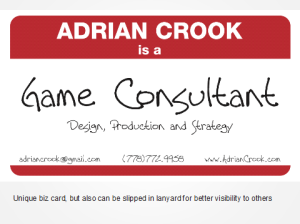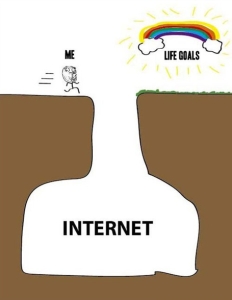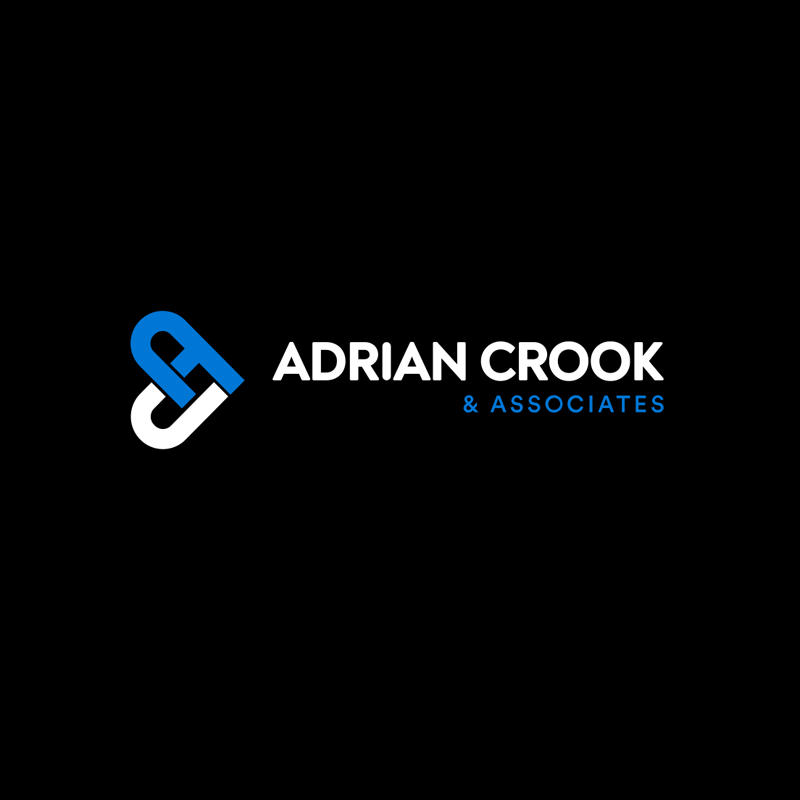Introduction
I’ve been attending game industry conferences for the past two decades, starting back in the mid 90’s when I worked at EA. I’ve been a speaker or panelist at least a dozen times at a variety of conferences, and have attended about 10 different GDC’s.
I’ve picked up dozens of tips during those 20 years, and learned some lessons the hard way. Today, I’m going to share my insights with you, in hopes that you’ll benefit from this information and improve your own experience at GDC 2015.
These tips are targeted toward a GDC attendee looking to network with industry professionals, get the most out of meetings they’ve booked, and create lasting relationships with people they connect with at the conference. Of course, plenty of these tips will be useful for first-time attendees or those looking to ramp up their conference game to the next level.
Additionally, while the guide is specific to GDC, many of the tips are comprehensive enough that they will be relevant to other conferences you have the chance to attend.
Let’s get started!
Preparing for the conference
Tip: Pick your pass wisely.
When choosing which pass to purchase, consider your budget, the length of time you’re staying, and the amount of time you can actually dedicate toward utilizing your pass privileges. For example, if your priority is networking and seeing new game tech at the Expo, access to the talks may be unnecessary. You might even be able to meet your conference goals without purchasing a pass, since you don’t need a pass to attend many of the parties and events outside of the Moscone.
There are also several ways to attend GDC for free. While the deadlines for these have probably passed for GDC 2015, keep them in mind for 2016.
- Volunteer as a Conference Associate (CA). Note that the time commitment can be substantial, but you’re guaranteed to meet lots of people and have a unique opening to conversations (“Hi, I’m a CA. Is there anything I can help you with?”).
- In 2007 I ran a successful blog about free-to-play games that got a lot of traffic. I was therefore able to apply to go to a conference (not GDC) as press, who get in for free.
- If you can snag a spot as a presenter, speaker or panelist, you will also get a free pass.
Tip: Clean up your social network profiles.
Cull your social media profiles for outdated information, embarrassing posts or unsightly photos. Update your bio, photo, and links as needed. Get professional photos taken if none of your personal ones are suitable.
Tip: Find and connect with people who are also attending GDC.
- Eventbrite can be used to find after parties for the conference and other events that your contacts are going to. Connect your Facebook profile for best results.
- Filter your LinkedIn contacts by location. This way you can find out who is living in the conference location and more likely to go. You can also schedule time to catch up with them even if they are not attending GDC.
- Post updates on your social networks. Tell people what conference you’re going to ahead of time. Remind them you’re going a week or so before GDC begins, especially if you want to schedule time to connect at the conference.
- Look for the delegate list (here’s the speaker list for GDC 2015) and review it. It is useful for researching presenters, speakers, and panelists.
- Prepare and send out several rounds of emails to get in touch with folks. Here’s a guide to timing and how to prioritize everything.
Before GDC
- 3 Weeks Out: Initial meeting request emails to tier T contacts
- 2 Weeks Out: Follow up on initial emails, Email Tier 2 contacts
- 1 Week Out: Follow up on Tier 2 emails, Send confirmation emails for meetings, Try to get cell phone numbers of the people you’re meeting with and enter them into your phone
Week Of GDC
- Every day, call, text or email people you’re meeting with to confirm meeting time and location
After GDC
- 2-3 Days After: Follow up emails to Tier 1 contacts
- 1 Week After: Follow up emails to Tier 2 contacts

Tip: Be smart when booking your meetings.
- For most meetings, 30 minutes is more than enough time.
- Create a shared calendar for groups and use it to coordinate.
- Make sure to include time for walking to and from meetings.
- Look for free meeting places outside of, but close to, the conference venue. For example, there are lots of coffee shops within walking distance of the Moscone Center. Meeting in common areas at the conference itself is loud and unprofessional. You’re also more likely to end up in the wrong spot and miss the meeting entirely.
- If possible, print out a copy of your meeting calendar in case the internet connection is spotty.
- Make use of the tools available to you to connect with other game industry professionals and schedule meetings. For example, GDC offers a Business Matchmaking service included with their All Access Pass.
Tip: Be mindful of these little extras that could make or break your conference experience.
- Book a hotel near the conference, with free or affordable transportation (walking, metro, bus). Proximity is more important than quality. The size of city blocks might be substantially different in San Francisco compared to where you live. In the example below, a quick 3 block hike in Vancouver turns into a 1.2km trek (3/4 of a mile) in San Fran. So if a hotel promises it’s “only 4 blocks away from Moscone,” double check the route and distance in Google Maps before booking.
- If you’re an international traveler, research your cell phone’s voice and data plan package to make sure you aren’t slammed with fees and roaming charges in the US. For Canadians, look into a service like Roam Mobility that offers SIM cards and travel phones.

- Bring along a ton of business cards — more than you think you’ll need. Unique, distinctive, or funny cards are great… just don’t go overboard. Put a card in both sides of your lanyard.
- Make a memorable sales tool. A game demo, PowerPoint of 10-15 slides that can be shown on an iPad, sticker, or t-shirt can leave a lasting impression in the chaos of GDC week. Pair the sales tool with an upbeat business or game pitch that you can easily customize on the fly depending on the attention span of your listener.
During the conference
Tip: Don’t be afraid to strike up conversations with new people, but not in an aggressive way.
For introductions:
- Use visible cues (if someone gives you a reason to start a convo, take it)
- Provide your own visual cues (cool shirts, stickers, an interesting book)
- Don’t interrupt a conversation that looks serious, especially if people are using words like “contracts” or “deals.”
- Provide an introduction, a handshake, and a question; then listen
To keep the conversation going:
- Let them talk about themselves
- Use their name during the conversation to help you remember it
- Resist the urge to “one-up” someone’s story
- Find ways to help people
- Take notes with pen and paper, if possible. When you pull out a phone or iPad to jot down notes, you’re likely to be distracted by zillions of notifications and messages. Furthermore, we’ve all had those conversations with someone whose eyes are glued to their phone. It’s hard to tell if the person is sincerely listening or just browsing their Facebook. Don’t be that person!
- Write details on the person’s business card and follow up (they won’t). Even a quick note like “Met in line for coffee on Thursday – robots” can be enough to jog your memory after a busy week, and provide a topic for your follow up email.
 Tip: Network with speakers.
Tip: Network with speakers.
- Sit in the front row during talks, or even grab a spot on the floor if it’s really crowded.
- Ask good questions. Avoid talking to hear your own voice, avoid questions that are more meant to make a statement.
- Introduce yourself to the speaker afterwards. Just be conscious of their time. There are probably lots of other folks who want to talk to them, too.
Tip: Be at the top of your game during meetings.
- Don’t expect to “close” — instead, focus on building a relationship with the person (or group) you are meeting with and strengthen their belief and trust in you and your business. They want to know you are competent, rational, and easy to deal with.
- Be able to speak about your prior products, their strengths and (more importantly) their weaknesses, provided you can demonstrate that you learned from those mistakes.
- Know your key numbers well. For example, if you’re running a FB or iOS product, know the D1/D7 retention, ARPU, LTV, etc.
- Know something about the company and/or individual you are meeting. Check out their website beforehand, play their most recent product, or read a recent news piece about them. You can also check their LinkedIn profile to see if you have any contacts in common.
- If you are meeting with people from a foreign culture, study the business meeting etiquette for their country. This website has etiquette tips for countries all over the world, and BusinessMeeting.org has tips specifically for European countries.
Tip: Make use of social media during the conference.
- When tweeting from the show, use the official hashtag: #GDC15. #GDC2015 is also being used.
- If you’re blogging any sessions, use the official hashtag and tag the speaker (if you know their twitter account) and the official show twitter account (as they may RT you). GDC’s twitter account is @Official_GDC.
- Add contacts to LinkedIn regularly. Every night or morning, add the people you met the previous day to your LinkedIn, with a small personal note (“Great to meet you in the Starbucks line today – let’s keep in touch!”).
- Review the show twitter hashtag periodically – if there is someone in there you want to meet, try reaching out via twitter. It often levels the field in terms of booking meetings.
- Be judicious about sending friend requests to people on Facebook during the conference, especially if they are more of a potential business contact than a future friend. LinkedIn is the safer bet.
 Tip: Keep up the networking at parties, but don’t be afraid to slow down and relax.
Tip: Keep up the networking at parties, but don’t be afraid to slow down and relax.
- Triple book parties.
- Move around and look at people’s badges to find new people to talk to.
- Smile, laugh, appear interesting and un-snobbish.
- Don’t look over your shoulder for someone better to chat to. If you need to exit a conversation, politely tell them you have someone to meet up with and you’ll talk online later, or see them in the halls. Keep the tone friendly and shake hands.
- Leave your clique.
- Hide drinks in photos.
- Don’t get wasted.
- Leave yourself time to recover or sleep in after parties if you think you’ll need it.
Here’s a list of GDC 2015 parties and social events, a list from the Fellowship of GDC Parties, and another list from @GDCparties on Twitter. Check Eventbrite too.
Following up
Tip: Make following up with people a priority. It can feel like a grind, but it’s worth it. Use these tips to help make it easier.
- Import and save business cards using an app like Evernote.
- Using Contactually, you can set a weekly goal for followups and Contactually will track the number you send, and recommend them for you. “Contactually automatically lets you know which important relationships you’ve let go cold.”
- Five Hundred Plus reminds you to touch base with people by sending you an email. It helps you keep track of when you got in touch with your contacts and what you spoke about.
- When it’s time to write follow-ups, focus! Move FB, twitter and social media apps to page 2 of your phone. Turn off non-essential notifications. Set aside time to check your email and send replies, don’t do it constantly. Turn off vibration on your phone. Route your phone to Gmail. Make heavy use of Gmail filters to cut down on distractions. For example, you can set up a Gmail filter to “skip the inbox” on any email containing the word “unsubscribe.” This keeps your inbox clear from advertisements and emails sent from mailing lists. All of these things will help you maintain concentration and finish the task sooner.
- If you get stuck while writing a follow up to a very important contact, let it sit for a couple hours and come back to it.
Tip: Find unique, memorable ways to interact with new contacts besides a LinkedIn or Twitter add.
- Play games with your new contacts. Add them on Trivia Crack or whatever the latest game craze is. You may wind up trying the game out with the thought leaders in that space. Also seek out games with a chat feature. Casual in-app conversations can turn into gigs.
- Create and join communities. Build and reinforce your network by contributing to a specialized industry group, or create your own.
 Tip: Conferences are a means to an end, not the end itself.
Tip: Conferences are a means to an end, not the end itself.
- Don’t only call on contacts when you need them.
- Find the ways that you’re comfortable marketing you.
- Focus on what you’re good at, not all that you’ve done.
- Listen more than you talk.
- A reputation isn’t built overnight.
In closing
I hope you found this list of tips helpful and informative. Like anything in life, it takes a bit of practice to figure out the best ways to navigate multi-day conferences — especially ones as massive as GDC.
My company, Adrian Crook & Associates, is the leading mobile game design consulting agency. We have worked with valued clients including Zynga, Microsoft, and EA, and contributed design to over 50 online and freemium mobile games. We are always looking for new opportunities to connect with professionals and businesses in the game industry. Please get in touch if you’d like to meet up with me at GDC to discuss the challenges with your latest projects, and the solutions AC&A can provide!







